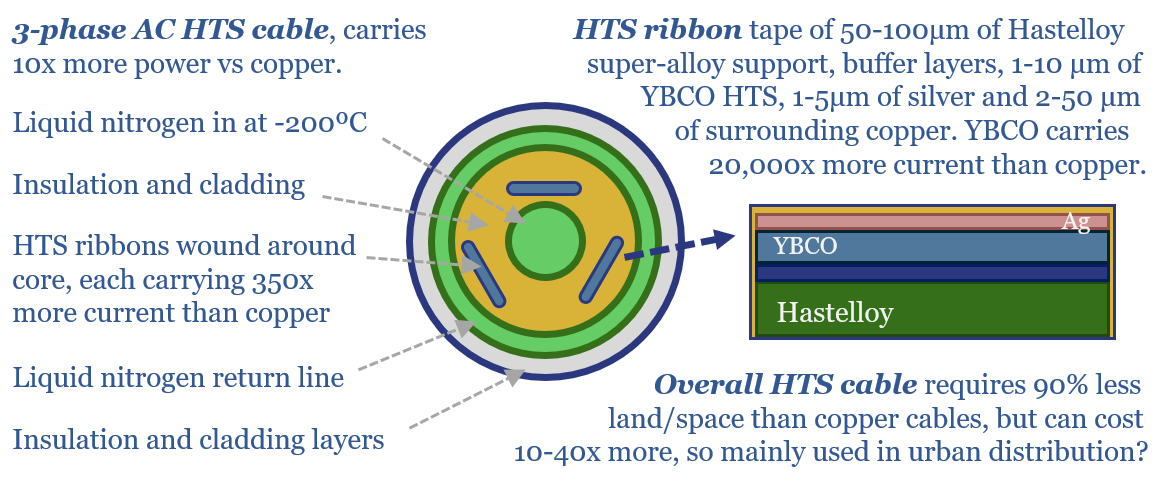High-temperature superconductors (HTSs) carry 20,000x more current than copper, with almost no electrical resistance. They must be cooled to -200ºC. So costs have been high at 35 past projects. Yet this 16-page report explores whether HTS cables will now accelerate to defray power grid bottlenecks? And who benefits within the supply chain?
Superconductivity is a form of quantum magic, where particular materials show almost no resistance to electrical currents, once their temperature drops below some critical transition temperature.
Hence these materials can theoretically carry infinite quantities of current. The weird quantum effects that give rise to superconductivity are briefly described on page 2.
Hundreds of materials have been shown to demonstrate superconductivity, since the effect was first discovered in mercury in 1911. Some of the key materials, such as Nb3Sn, NbTi, BSCCO and YBCO (REBCOs), are summarized on pages 3-4.
The reason for writing this report is our growing fear over power grid bottlenecks as the biggest bottleneck in energy markets and for energy transition. We have already explored advanced conductors to debottleneck the overhead transmission network.
Yet one of the biggest unsolved challenges is expanding the distribution network in space-constrained urban environments. We outline how high-temperature superconductors could help on pages 5-7.
Superconductors have already been piloted in global power grids, with 35 past projects going back to 2000. So what costs and other details from past superconductor projects stand out on pages 8-9?
The costs of HTS cables are compared with costs of transmission and costs of distribution at conventional projects — both on a top-down and bottom-up basis — on pages 10-12.
Material implications of high-temperature superconductors are also explored, for materials such as silver, superalloys, yttrium, helium and for displacing copper on page 13.
Leading companies in superconductors include six large global producers, including leaders listed in Europe, the US and Japan, plus interesting private companies scaling up capacity. Conclusions from our superconductor company screen are reviewed in pages 14-16.
Finally, there are reasons to wonder whether higher-temperature or even room-temperature superconductors might be developed in the future, from the multi-billion member state space of possible candidates across materials science. We have predicted that AI will ultimately earn its keep by ‘figuring out’ state spaces too complex for human brains.
But in the mid-late 2020s, the most interesting angle is that we think YBCO HTSs will play an increasingly large role helping to debottleneck the distribution network, especially in space-constrained urban environments. Could project activity accelerate by 5-50x by 2030?
